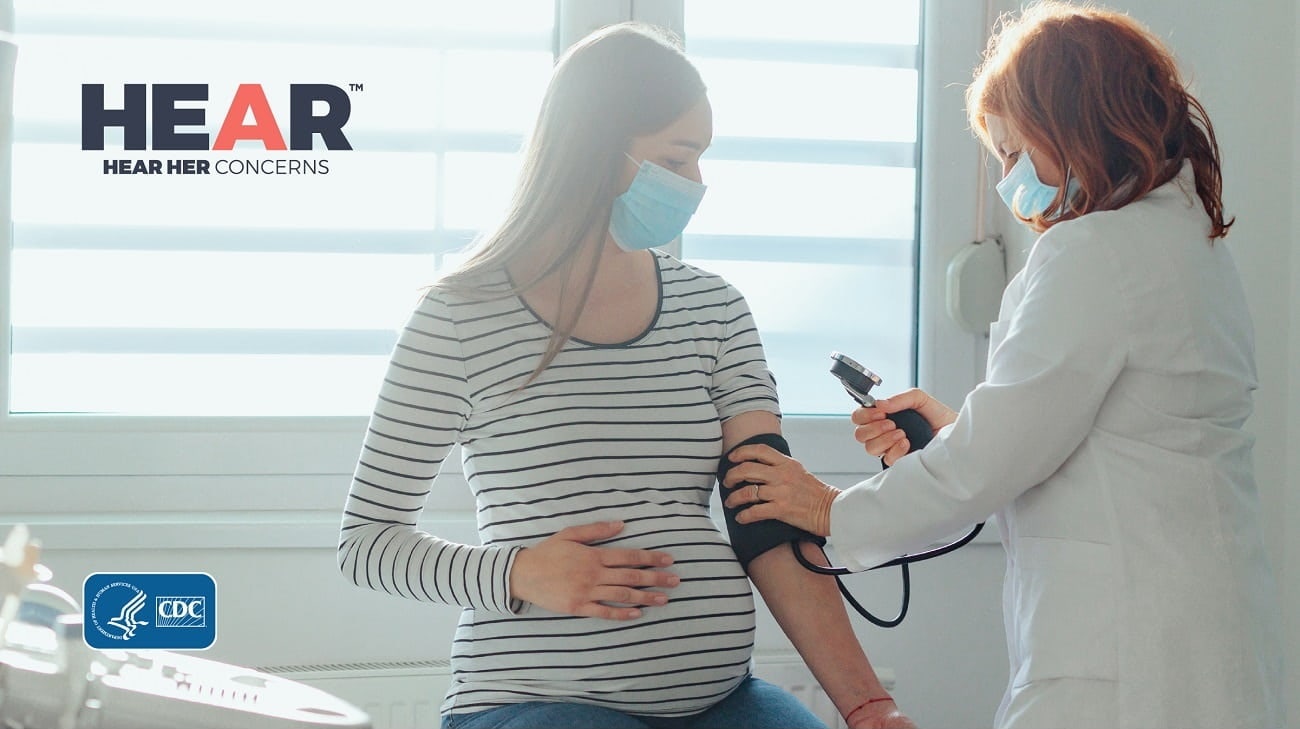At a glance
Obstetric professionals such as obstetricians, gynecologists, obstetric nurses, midwives, and women’s health nurse practitioners have an opportunity to share information with women about the urgent maternal warning signs during pregnancy and in the postpartum period. Start building trust and a relationship with your patient early in prenatal care.

Pregnancy-Related Deaths Can Happen During and After Pregnancy
Pregnancy-related deaths can happen during pregnancy and up to a year after the end of pregnancy. According to CDC data, 22% of pregnancy-related deaths happen during pregnancy, 25% during the day of delivery or up to a week after, and 53% 1 week to 1 year after the end of pregnancy.
Pregnant and postpartum women should seek medical care immediately if they experience any urgent maternal warning sign.
During the postpartum period, women may not consider that their health concern could be related to their recent pregnancy. It's important to make sure soon-to-be moms understand the importance of monitoring their own health, in addition to the health of their newborn. Ensure your patients know to tell a medical professional they were pregnant in the past year when they seek care.
Make Sure Each Patient Is Heard
Taking the time to build trust with your patients and engage them in their care can lead to positive outcomes. Encourage patients to share any concerns they may have. Many women feel that their concerns during and after pregnancy are not heard. Although health care settings are often busy and time is limited, taking a few moments to actively listen to what is being said can make all the difference. The goal is to better understand your patient's needs and provide quality care.
Active listening involves receptive body language, practicing empathy, repeating back questions or concerns, and asking clarifying questions to make sure you understand. It is respectful and non-judgmental. Active listening helps build trust with your patients through shared knowledge.
Address Health Inequities
The tragic reality is that Black, American Indian and Alaska Native, and Native Hawaiian and Pacific Islander women are disproportionately impacted by pregnancy-related deaths.
The American College of Obstetricians and Gynecologists (ACOG) makes the following recommendations for obstetricians/gynecologists and other health care providers to improve patient-centered care and decrease inequities in reproductive health care by:
- Inquiring about and documenting social and structural determinants of health that may influence a patient’s health and use of health care.
- Maximizing referrals to social services to help improve patients’ abilities to fulfill these needs.
- Providing access to interpreter services for all patient interactions when the patient's language is not the clinicians’ language.
- Recognizing that stereotyping patients using presumed beliefs can negatively affect patient interactions.
- Avoiding solely attributing patient behaviors to individual choices, without recognizing the role of social and structural factors.
Ensure every woman is provided respectful, patient-centered care. Health care professionals can take training on diversity, shared decision-making, cultural competency, and implicit biases. These are important components to provide respectful, patient-centered care and address disparities in health care and health outcomes.
